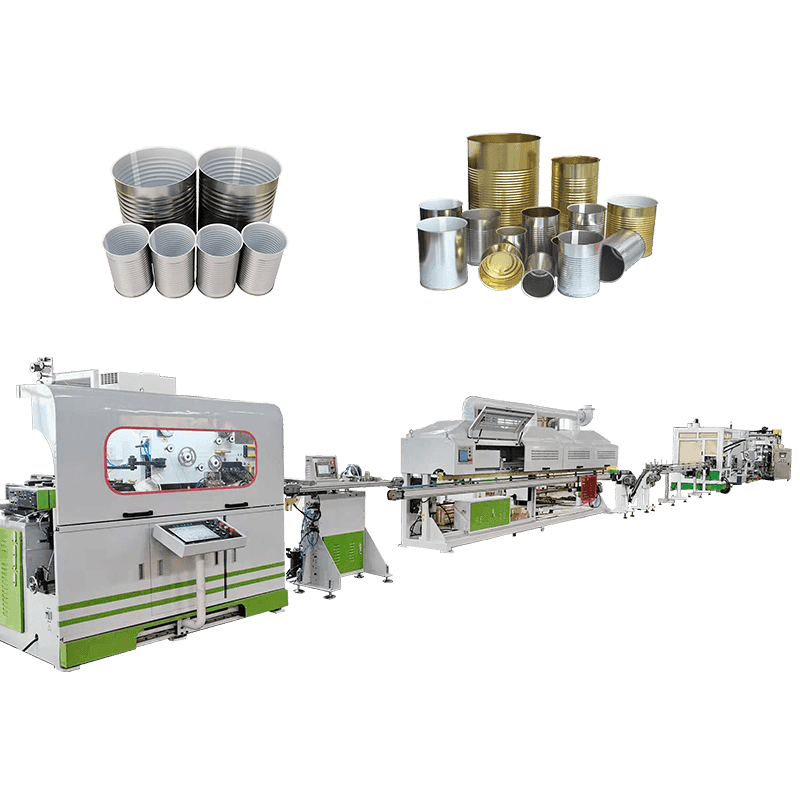The importance of environmental protection and energy-saving design in metal lid production lines
With the continuous advancement of industrial development, environmental protection and energy conservation have become the focus of attention in the manufacturing industry. As a typical metal processing equipment, the metal lid production line involves a large amount of energy consumption and raw material use in its production process. Therefore, paying attention to environmental protection and energy conservation in the design not only helps to reduce production costs, but also conforms to the current development trend of green manufacturing. Environmental protection and energy-saving design can effectively reduce resource waste, reduce harmful substance emissions, improve the working environment, and enhance the social responsibility and market competitiveness of enterprises.
Application of energy-saving technology
Modern metal lid production lines generally adopt a number of energy-saving technologies to reduce energy consumption. For example, the use of high-efficiency motors and frequency conversion control technology can automatically adjust the operating speed according to the load to avoid unnecessary energy consumption. The heating and cooling systems in the production line also achieve energy saving through optimized design, such as using heat recovery devices to recover waste heat and reduce energy loss. In addition, the introduction of automated control systems helps to accurately control production process parameters and avoid energy waste due to excessive processing. Overall, the application of energy-saving technology makes the production line more economical and meets the requirements of energy conservation and emission reduction.
Adoption of environmentally friendly materials and processes
In the production process of metal caps, the selection of raw materials and the use of processes have a direct impact on environmental protection. Environmental design encourages the use of recyclable materials and low-pollution surface treatment processes to reduce negative impacts on the environment. For example, the use of water-based paint instead of traditional solvent-based paint can reduce the emission of volatile organic compounds (VOC). At the same time, the production line design focuses on reducing the cutting and waste generation of materials, and improving material utilization by optimizing stamping and forming processes. Reasonable process arrangements reduce the pressure of waste disposal and reduce pollution to the environment.
Waste and emission control measures
The metal lid production line will generate a certain amount of waste and emissions during operation, including metal chips, oil pollution and exhaust gas. In the environmental design, the production line is equipped with an effective waste collection and treatment system, such as centralized collection of metal chips for recycling, installation of oil-water separation devices to treat waste oil, and use of filtering and purification equipment to reduce exhaust gas emissions. Through these measures, the impact of production on the environment can be reduced and the requirements of relevant environmental protection regulations can be met. In addition, the reuse of waste also reduces the consumption of raw materials and promotes the development of a circular economy.
Water-saving design and resource management
In addition to energy saving, water-saving design is also an important part of the environmental protection measures of the metal lid production line. Some equipment needs to be cooled or cleaned with water during the production process. Reasonable design of the circulating water system can greatly reduce the water consumption. For example, the closed-loop cooling system avoids the discharge of a large amount of cooling water. In terms of resource management, the production line is equipped with an intelligent monitoring system to monitor the use of water, electricity and other resources in real time, helping enterprises to promptly discover abnormalities and waste links, and promote the rational allocation and effective use of resources.
Environmental considerations of equipment structure and materials
The equipment structure design of the metal lid production line also reflects the concept of environmental protection. The modular design facilitates maintenance and upgrading, extends the service life of the equipment, and reduces resource consumption. The equipment material is durable and recyclable metal material, which is conducive to the later recycling and reuse of the equipment. At the same time, the equipment is designed to reduce noise and vibration, improve the working environment, and reduce the impact on the surrounding environment. These designs not only improve the efficiency of equipment use, but also reflect the comprehensive consideration of environmental protection and energy saving.
Intelligent control helps energy saving and environmental protection
Intelligent control system plays a key role in the metal lid production line. Through real-time data collection and analysis, the system can accurately control the operating status of each process to avoid ineffective operation and energy waste. The intelligent early warning function helps to detect equipment abnormalities in time and reduce the increase in energy consumption caused by failures. The automatic adjustment function dynamically adjusts the equipment operating parameters according to production needs to ensure the balance between energy consumption and production capacity. This intelligent management mode enables energy-saving and environmental protection measures to be effectively implemented and improves the overall resource utilization efficiency of the production line.

 English
English عربى
عربى русский
русский




